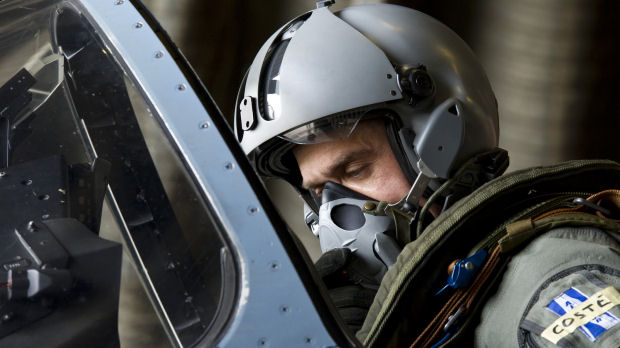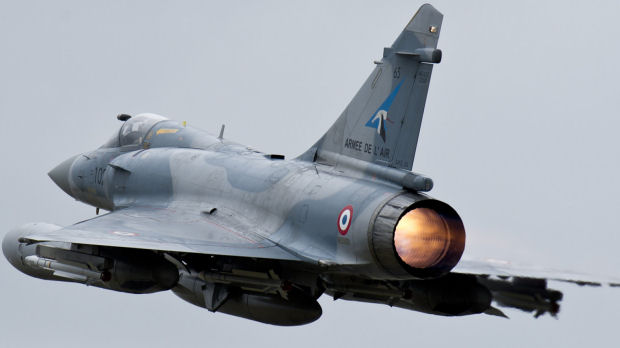Libya: UN hits Gaddafi hard
In the face of Gaddafi’s continuing defiance in Libya, defence analyst Anthony Tucker-Jones writes for Channel 4 News on the weaponry gathering to enforce the No-Fly Zone.

The international community was criticised for its complete lack of urgency in helping the Libyan opposition. In reality it was quietly and efficiently planning to stop Colonel Gaddafi. Judging by events on 20 March preparations were well underway before UN Security Resolution 1973 was ever agreed.
The opening attacks on Libya were not reminiscent of the “shock and awe” campaign in the Iraq war in 2003, as some might have expected, as they were nowhere near the same intensity. Nonetheless the speed of the assault came as a surprise to everyone.
Within an hour of French fighters attacking Gaddafi’s tanks southwest of beleaguered Benghazi, the Coalition sought to “shake the battle space” with missile strikes on over 20 Libyan air defence sites in western Libya. This was designed to secure battle space dominance before combat patrols enforce the No-Fly Zone. French fighters are operating from French airbases at Istres and Solenzara (with 90 and 60 minute flying times respectively).
Add your voice: Channel 4 News live blog: Target Gaddafi
At 1500 Eastern Time the first of 112 Tomahawk cruise missiles hit their targets. A US spokesman confirmed that the US Navy was using a new generation of Tomahawk that can loiter over the target before striking – although on this occasion they were used in the conventional manner.
The missiles were fired from US destroyers and submarines that constitute part of a fleet of 25 vessels gathered for Operation Odyssey Dawn. A British Trafalgar class submarine also contributed to the bombardment.
Currently Washington has destroyers (including USS Barry, USS Mason and USS Stout), capable of launching Tomahawk stationed in the Mediterranean; America also has missile-firing submarines available. USS Kearsage, a powerful assault carrier, and USS Ponce a landing platform dock are likewise in the Med, but are due to be relieved.

The attacks were the opening phase of the Suppression of Enemy Air Defences as the Tomahawks were directed at Gaddafi’s integrated air defence system; focusing on his SA-5 surface-to-air missiles and their command and control centres. Gaddafi’s antiquated Soviet supplied surface-to-air missiles are well past their sell by date and many of them are considered non-operational.
His air defence command is believed to have approximately 30 sites controlled by 15 early warning radars. Missiles include SA-2, SA-3, SA-5, SA-6 and SA-13. These forces are organised into around 15 brigades. The SA-6 in the hands of the Bosnian Serbs proved capable of shooting down the US F-16 fighter jet and the SA-6 offers a stand-off capability with a 300km range.
In the air the RAF’s Tornados and Typhoons will now bear the brunt of things along with American F-16s based in Italy. Canada has also sent half a dozen CF-18 jet fighters (which last saw combat over Kosovo) and Belgium, Denmark, Greece and Norway have each deployed half a dozen F-16 fighters to Sicily for immediate action.
The American carrier USS Enterprise and her carrier strike group are in the Arabian Sea, with the carrier USS Carl Vinson supporting operations in Afghanistan. Enterprise could be redeployed via Suez at short notice; her air wing comprises up to 80 jets.
In the meantime an Amphibious Ready Group or Expeditionary Strike Group will shortly be on the way from America. This is headed by the USS Bataan, another assault carrier, whose Marine Corps air wing can include AV-8B Harriers and attack helicopters.
These vessels are the largest amphibious assault ships in the world. Bataan is supported by the amphibious transport dock ship USS Mesa Verde and the dock landing ship USS Whidbey Island. They deploy from America on 23 March to join the US 6th Fleet based at Naples, Italy.
Where Gaddafi is concerned it’s time for NATO’s big stick; heed UNSCR 1973 or face the consequences.
Meanwhile the French carrier FS Charles de Gaulle based at Toulon is poised to play a role. She can contribute up to 40 aircraft including the Rafale. Likewise the Italian carrier Giuseppe Garibaldi, which carries AV-8B Harriers, stationed at Taranto may play a part; though currently Italy is only offering basing facilities.
While the British frigates HMS Cumberland and HMS Westminster are off Libya, the UK’s naval air force is few and far between after the withdrawal from service of the carrier HMS Ark Royal.
HMS Ocean the helicopter carrier (recently off the British southern coast) can deploy Apache attack helicopters, but the Albion Class assault ships are not designed to support No-Fly Zone Ops.
The US Marines have ample experience in this type of operation, Bataan’s sister ship Kearsage saw action during the Balkans Conflict. Clearly though one assault carrier will not be sufficient. During the Balkans crisis NATO maintained four carriers on station (USS Theodore Roosevelt, HMS Invincible, France’s FNS Foch and Italy’s Giuseppe Garibaldi).
Where Gaddafi is concerned it’s time for NATO’s big stick; heed UNSCR 1973 or face the consequences.
Anthony Tucker-Jones is a defence analyst and author of “The Rise of Militant Islam”.
-
Latest news
-
Boy with profound learning disabilities reaches out of court settlement after abuse in residential school7m

-
India election: Modi rivals hit by string of raids and arrests7m

-
Can UK’s abandoned mines be used to build a greener future?5m

-
Sycamore Gap: Man pleads not guilty to felling iconic tree2m

-
‘Child poverty has not fallen since Tories came in’, says Gordon Brown5m

-




